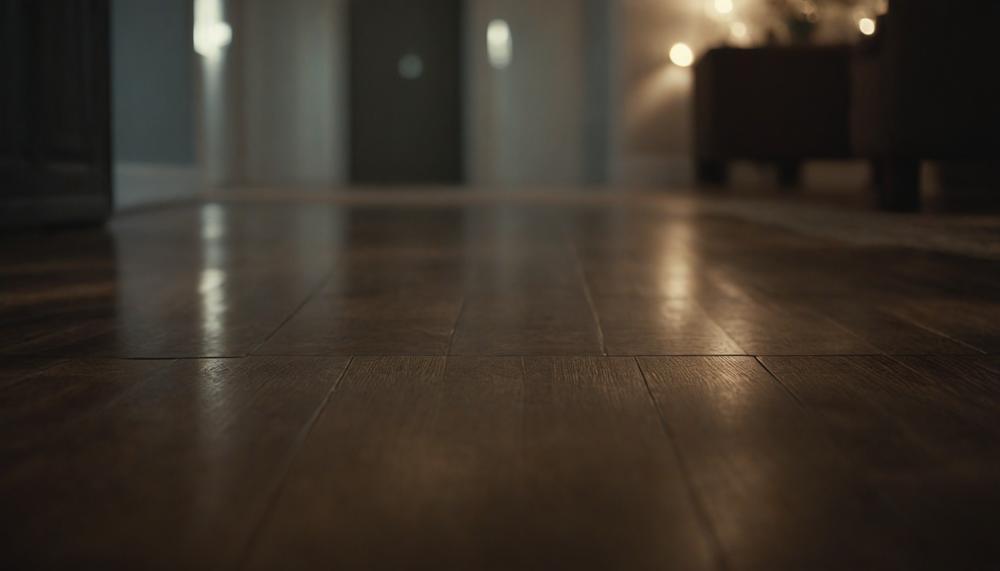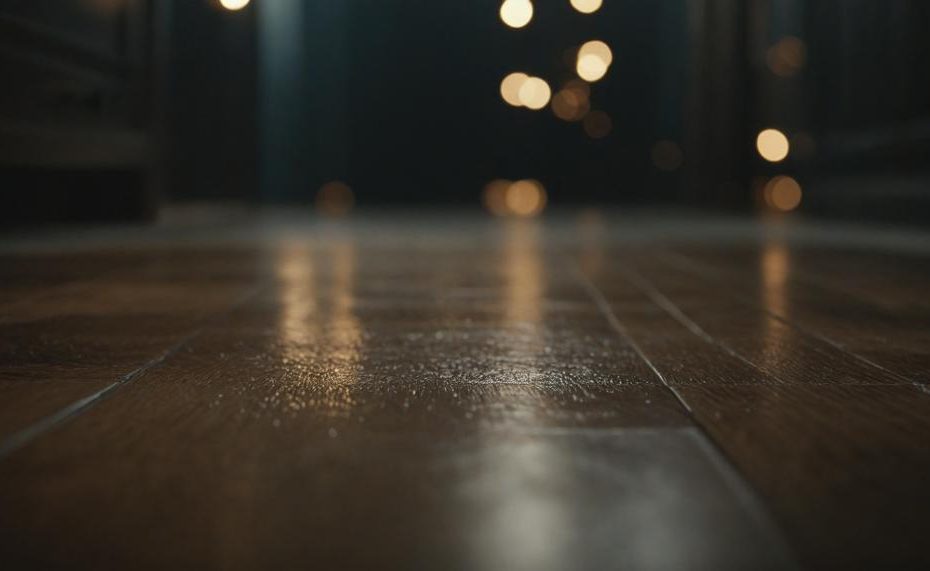No, a floating floor is not designed to be glued down. While it might seem tempting to add glue for extra stability, doing so can actually damage the floor over time due to natural temperature changes causing expansion and contraction. However, there are certain situations where gluing might be beneficial, such as in wet areas like bathrooms to seal the seams and prevent moisture damage.
It’s crucial to always check the manufacturer’s guidelines, as gluing a floating floor can void the warranty.
Key Takeaways:
- Damage Risk: Gluing down floating laminate floors can lead to damage from temperature changes.
- Wet Areas: In places like bathrooms, gluing can prevent moisture damage.
- Warranty Concerns: Always read the manufacturer’s instructions, as gluing can void warranties.
- Purpose of Gluing: Consider gluing only for specific issues like strengthening click lock systems or reducing noise.
- Vinyl and Engineered Hardwood: These can be either floated or glued, with gluing enhancing durability in high traffic areas.
- Edge Gluing: Common in bathrooms to protect against water damage.
- Condition Check: Ensure boards are in good condition and have similar colors/patterns before gluing.
Understanding these aspects will help you make informed decisions about your flooring installation and maintenance, ensuring longevity and performance.
Table of Contents
- 1 What is a Floating Floor?
- 2 What Happens If You Glue Down Floating Floors?
- 3 Reasons You Need to Glue Down Floating Floors
- 4 Can You Glue Down Floating Laminate Floor?
- 5 Can You Glue Down Floating Vinyl or Luxury Vinyl?
- 6 Can You Glue Down Floating Engineered Hardwood?
- 7 How to Glue Down Floating Floors: The Edge Glue Technique
- 8 Leave a ReplyCancel reply
- 9 Conclusion
What is a Floating Floor?
A floating floor stands apart from other flooring types primarily due to its installation method. Instead of being nailed or glued directly to the subfloor, floating floors are laid over an underlayment and “float” above the subfloor. The planks or tiles interlock, creating a unified surface that moves as a single entity.
Here are the key differences between floating floors and other flooring types:
| Feature | Floating Floor | Other Flooring Types |
| Installation Method | Planks/tiles interlock and rest on an underlayment without being attached to the subfloor. | Nailed, glued, or stapled directly to the subfloor. |
| Movement | Allows for natural expansion and contraction, reducing stress on individual planks. | Less flexibility, which can lead to gaps or buckling if not properly installed. |
| Sound and Insulation | The underlayment provides additional sound insulation and cushioning. | Depends on the type and thickness of the flooring material and the underlayment used. |
| Repair and Replacement | Individual planks can be replaced easily without affecting the rest of the floor. | More difficult to repair; often requires professional help. |
| Suitable Areas | Ideal for DIY projects and can be used in a variety of settings, including over existing floors. | More specialized installation, often requiring professional skills. |
| Moisture Resistance | Not inherently moisture-resistant; specific products or gluing techniques may be needed in wet areas. | Options like tile and certain types of vinyl are naturally more moisture-resistant. |
| Cost | Generally more affordable due to simpler installation. | Can be more expensive due to labor-intensive installation processes. |
Floating floors are commonly seen in materials like laminate, luxury vinyl planks, and some engineered hardwoods. Each of these materials brings its own set of benefits and drawbacks, but the floating installation method remains consistent, making it a popular choice for its ease and versatility.
What Happens If You Glue Down Floating Floors?
The short answer is yes, gluing down a floating floor can cause damage and a host of issues.

Floating floors, such as laminate and luxury vinyl planks, are designed to “float” over the subfloor, not to be glued down. Here’s why gluing can lead to problems:
| Problem | Description | Impact |
| Restricted Movement | Floating floors are meant to expand and contract with changes in temperature and humidity. Gluing them down restricts this natural movement. | Can cause buckling, warping, or gaps in the flooring. |
| Damage to Flooring Material | Applying glue can damage the materials of the floating floor, especially if it wasn’t designed for adhesive use. | Reduces the lifespan of the flooring and may void the warranty. |
| Compromised Structural Integrity | Floating floors rely on their interconnected structure to maintain integrity. | Gluing can weaken the locking mechanism between planks, leading to loose or uneven surfaces. |
| Difficult Repairs | One of the benefits of floating floors is the ease of repair by replacing individual planks. | Gluing makes replacing damaged planks much more challenging and costly. |
| Increased Installation Time and Cost | Gluing down the floor requires additional materials and labour. | Elevates the overall cost and effort of the installation process. |
For those curious about the proper installation techniques, floating floors should typically be installed using an edge glue method, if gluing is absolutely necessary, rather than a full glue-down approach. This method allows for some degree of movement while still securing the edges.
Reasons You Need to Glue Down Floating Floors
Considering gluing down your floating floors instead of leaving them unattached has several benefits:
| Benefit | Description | Application |
| Enhanced Stability and Durability | Prevents planks from shifting and increases overall floor durability. | High-traffic areas |
| Moisture Protection | Seals seams to prevent water damage and mold growth. | Bathrooms, kitchens |
| Noise Reduction | Eliminates hollow sounds, providing a quieter flooring solution. | Multi-story buildings |
| Improved Click Lock Systems | Strengthens joints, maintaining floor structure integrity. | General use, especially where floors see heavy use |
| Temperature and Humidity Control | Prevents issues with expansion and contraction. | Areas with fluctuating climate conditions |
It’s essential to consider the type of flooring and manufacturer’s guidelines before opting to glue down floating floors.
For instance, gluing laminate floors can cause damage due to temperature changes, and it might void the warranty. Always ensure that the floorboards are in good condition and suitable for gluing to achieve the best results.
Can You Glue Down Floating Laminate Floor?
The short answer is no, floating laminate floors are designed to be installed without adhesive. Floating laminate floors rely on their ability to expand and contract with temperature changes. Using glue to secure them can inhibit this movement, potentially leading to damage.
However, there are specific situations where a bit of glue might be useful. For instance, in moisture-prone areas like bathrooms, you might apply glue to the tongue and groove seams to seal them against water. This practice helps prevent moisture from seeping between the planks and causing swelling or warping.
When to Use Glue for Laminate Flooring:
| Scenario | Recommendation | Reason |
| General Installation | Do not use glue | Maintains the floor’s ability to expand and contract |
| High Traffic Areas | Optional | Improves stability but can still limit movement |
| Moisture-Prone Areas | Use glue on seams | Prevents water damage by sealing gaps |
Can You Glue Down Floating Vinyl or Luxury Vinyl?
The short answer is no, you should not glue down floating vinyl. Floating vinyl flooring is designed to “float” over the subfloor, allowing it to expand and contract with temperature and humidity changes. Gluing it down would negate this benefit and could lead to buckling or other issues. On the other hand, luxury vinyl can be glued down, but it depends on the specific product and installation requirements.
Main Difference Between Gluing Down Floating Vinyl and Luxury Vinyl
The main difference lies in the installation method:
| Aspect | Floating Vinyl | Glue-Down Luxury Vinyl |
| Installation Method | Floats above the subfloor without adhesive | Attached directly to the subfloor using adhesive |
| Flexibility | Allows for expansion and contraction | More permanent, less flexible once installed |
| Core Type | Can have a rigid core for durability | Typically has a more flexible core |
| Ease of Removal | Easy to remove and reuse | Permanent, difficult to remove |
| Installation Time | Quicker to install | Longer installation process |
| Design Options | Wider selection of stone-like designs | Variety of styles and colors available |
| Wear Layer Thickness | Varies, can be more budget-friendly | Varies, can be more budget-friendly |
Can You Glue Down Floating Engineered Hardwood?
Yes, floating engineered hardwood can be glued down permanently. This method provides a stable and solid flooring option, especially beneficial over concrete subfloors. However, it is generally not recommended for DIY installations due to the complexities involved.
When gluing down floating engineered hardwood, the type of glue used is crucial. The most suitable adhesive is a urethane-based glue specifically designed for wood floors. Urethane adhesives offer excellent bond strength and flexibility, accommodating the natural expansion and contraction of wood.
Here’s a table summarising the key points:
| Aspect | Details | Recommendations |
| Glue Type | Urethane-based glue | Bostik Wood Flooring Adhesives |
| Installation Complexity | High – not recommended for DIY | Consider professional installation |
| Subfloor Compatibility | Ideal for concrete subfloors | Concrete Flooring Guide |
| Benefits | Stable and solid flooring | Reduced floor movement, better durability |
For a successful installation, it’s essential to ensure the subfloor is clean, dry, and level. Applying the urethane adhesive correctly and allowing adequate curing time will provide the best results.
How to Glue Down Floating Floors: The Edge Glue Technique
The edge glue technique is a method for gluing down floating floors, specifically in wet areas like bathrooms. This technique involves applying adhesive to the edges of the planks, rather than the entire surface, to seal the seams and prevent moisture damage. Here is a step-by-step guide on how to effectively use the edge glue technique for gluing down floating floors.
Step 1: Assess the planks and subfloor
Before starting the gluing process, it is important to assess the condition of the planks and subfloor. Make sure that all planks are in good condition and have similar colors and patterns. The subfloor should also be clean, dry, and level.
Step 2: Determine the pattern and place the planks
Decide on the pattern you want for your floor and place the planks accordingly. It is recommended to start from one corner of the room and work your way towards the other side.
Step 3: Apply the adhesive to the edge of the plank
Using a trowel or putty knife, apply a thin layer of adhesive along the edge of one plank. Be sure to follow the manufacturer’s instructions for the specific type of adhesive being used.
Step 4: Press the glued boards together
Carefully press the glued plank onto another plank, making sure that they are aligned properly. Use a rubber mallet or tapping block to ensure a tight fit.
Step 5: Clamping
If necessary, use clamps to hold the boards in place while the glue dries. Follow the manufacturer’s instructions for how long to leave them clamped.
Step 6: Scrape off the excess glue
After allowing enough time for the glue to dry, use a scraper or putty knife to remove any excess glue that may have squeezed out between the seams.
Step 7: Even out the irregular surface
If there are any gaps or uneven surfaces between planks, use wood filler to even them out. Sand the surface once the filler is dry and clean it before applying a final coat of finish.
In conclusion, the edge glue technique for gluing down floating floors can be an effective way to prevent moisture damage and improve durability in high traffic areas.
Leave a ReplyCancel reply
The Leave a Reply section is designed to foster community engagement and provide a platform for readers to interact with the content and each other. Specifically, for readers with questions about gluing down a floating floor, this section offers several benefits:
Purpose and Benefits of the Leave a Reply Section
| Purpose | Benefits |
| Encourage Discussion |
|
| Provide Personalized Responses |
|
| Share Experiences |
|
| Feedback on Content |
|
| Build Community |
|
By leveraging the Leave a Reply section, readers can tap into a wealth of collective knowledge, ensuring they are well-informed and supported in their flooring projects.
Conclusion
Gluing down a floating floor, though tempting for added stability, is generally not advisable. Floating floors, such as laminate and luxury vinyl planks, are engineered to “float” over the subfloor, allowing them to expand and contract with temperature changes. Gluing these floors can restrict this movement, leading to buckling, warping, or even gaps. Moreover, the adhesive can damage the materials, weaken the interlocking mechanism, and void warranties, ultimately reducing the floor’s lifespan and increasing repair costs.
However, exceptions exist, particularly in moisture-prone areas like bathrooms. Applying glue to the seams can create a seal that prevents water damage, enhancing the floor’s durability in such environments. Additionally, gluing can be beneficial for improving click-lock systems and reducing noise, making it a viable option in specific circumstances.
Before considering glue, always consult the manufacturer’s guidelines to avoid unintended consequences.






